Search Images
Browse Content (p. 1247)
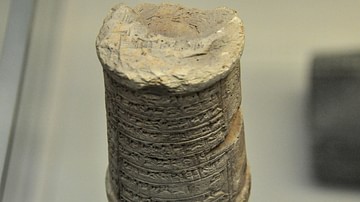
Image
Fired clay Cylinder Mentioning Amar-Sin
Scholarly copy of writings on a brick of Amar-Sin (Amar-Suen), a neo-Sumerian king who reigned between 2040-2036 BCE. The copy was written in the time of Sin-balassu-iqbi, governor of Ur during the reign of Ashurbanipal II, 675-655 BCE. From...
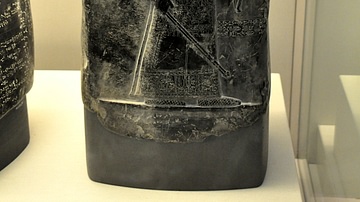
Image
Kudurru from Babylon
This kudurru (boundary stone) is a document which records the purchase of land by Marduk-nasir, a royal officer. The name of the stone was "The Establisher of the Boundary for Ever". It was carved just to the right of the figure, which represents...
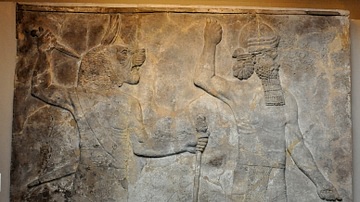
Image
Ugallu & the House God
This gypsum wall relief depicts two protective spirits, looking to the right; a lion-headed man (ugallu or the great lion) and a human-headed deity wearing a horned helmet (the house god). Neo-Assyrian Period, reign of Sennacherib, 700-692...
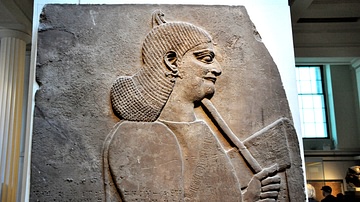
Image
Arms-bearer of Tiglath-pileser III
This gypsum wall relief depicts a beardless man holding a bow and quiver; this is the "Keeper of the King's Bow". His earring has 3 knob-like projections. Neo-Assyrian Period, reign of Tiglath-pileser III, circa 728 BCE. From the Central...
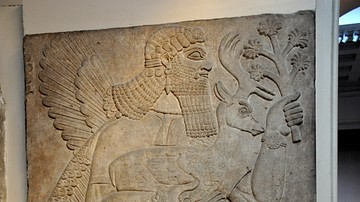
Image
Assyrian Apkallu Holding a Deer
A human-headed and winged Apkallu, holding a deer in his right arm. The left hand carries a palm branch. The animal is a Persian fallow deer (of the species Dama Mesopotamica). This deer still lives in Northern and North-Eastern parts of...
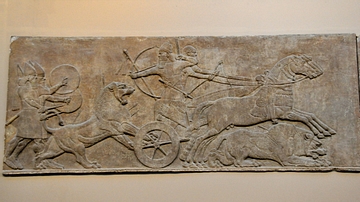
Image
Ashurnasirpal II Hunting Lions
This gypsum wall relief depicts a typical Assyrian lion-hunting scene. King Ashurnasirpal II stands in his royal chariot and shoots at a leaping wounded lion. Two royal attendants, behind the wounded lion, holding their shields and daggers...
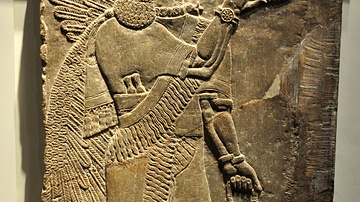
Image
Apkallu from the Temple of Ninurta
This gypsum wall relief depicts an eagle-headed and winged man; this is a protective spirit or Apkallu. He holds a bucket and a cone, and wears an elaborate dress and accessories as well as sandals. Neo-Assyrian Period, reign of Ashurnasirpal...
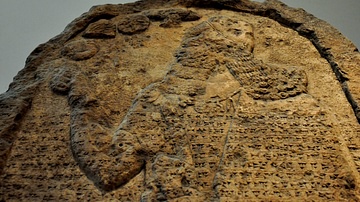
Image
Kurkh Stela of Shalmaneser III
This is a close-up view of the upper part of the stela, depicting Shalmaneser III praying in front of divine symbols (Ashur, Ishtar, Anu, and Sin). The cuneiform inscription is a text of a version of the King's annals and narrates his campaign...
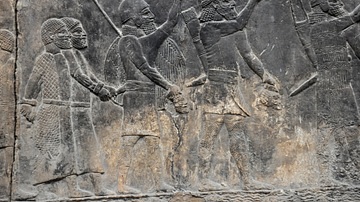
Image
Prisoners from the Town of -alammu
The Assyrian army of Sennacherib captured the city of -alammu. This gypsum wall relief depicts Assyrian soldiers carrying the beheaded heads of their defeated enemy. Prisoners are being reviewed by Sennacherib (who stands in his royal chariot...
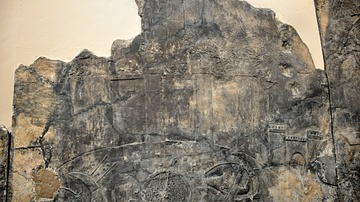
Image
The City of -alammu
This relief is part of a larger sequence showing the Assyrian military campaign and attack on the city of -alammu. The city gate, wall, and towers are shown here; the towers are occupied by soldiers trying to defend their city against the...